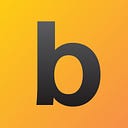Voice-Over Equipment 101: What You Need to Prepare
A list of equipment to invest in to become a voice-over artist.
Is the voice-over industry still a lucrative pursuit?
As videos remain the most sought-after content for marketing and advertising, the demand for voice-over audio shows no sign of slowing down.
Besides, video games, audio advertising, and audiobooks continue to expand their reach, further fueling the need for skilled voice artists.
Whether it’s a full-time passion or a part-time pursuit, your voice has the potential to make waves in this industry.
Let’s uncover the essential equipment to become a voice-over artist.
Microfon
A microphone or a mic is a device that captures your voice and converts it into an electrical audio signal.
It’s an essential tool in voice recording, so spending money on it can be a worthwhile investment.
You can use various types of microphones, such as dynamic, condenser, and ribbon microphones, each with its own characteristics.
Condenser and dynamic microphones are the best recommendations for voice-overs due to their sensitivity and ability to capture nuances in the voice.
Neumann TLM103 and RØDE NT1A are two brands many voice-over professionals recommend to beginners.
Pop Filter
A pop filter, a pop shield, or a windscreen is a screen or shield placed in front of the microphone.
Its function is to reduce or eliminate popping sounds and plosives.
When we produce certain consonants like “p” and “b,” a strong burst of air often happens, referred to as plosive.
This sound can distort the audio quality during recording.
Pop filters are typically made of fabric or metal and help ensure a cleaner and more professional recording.
You can use nylon mesh pop filters as a budget-friendly option.
But if you want to invest in durability, metal pop filters can also be an option.
A Quiet Place to Record
When setting up your home studio, selecting a space that offers tranquility and comfort is essential.
This involves finding a space with minimum noise, such as traffic, air conditioners, people talking, or other external noises.
Use budget-friendly solutions such as rugs and moving blankets if you’re a beginner.
These materials can effectively tackle acoustic issues in your space without breaking the bank.
Once you have the budget, use acoustic foam or panels to minimize echoes and reverberations.
An Audio Interface
An audio interface is a hardware tool that serves as a bridge between your microphone and your computer.
It ensures your microphone’s signal is captured accurately for achieving professional-grade audio recordings.
It connects your microphone and computer through USB, Thunderbolt, or other interfaces.
An audio interface also offers additional features, such as preamps for adjusting microphone input levels, phantom power for condenser microphones, and various input and output options.
Read More: Vocal Fry in Voice-over
An Audio Recorder
An audio recorder is a device designed to capture audio independently of a computer.
While computers and smartphones often have built-in recording capabilities, dedicated audio recorders offer higher quality, flexibility, and control.
Many use recorders to record interviews and capture audio when a computer setup is impractical.
Audio recorders come in various types, including portable handheld recorders and digital field recorders.
They can provide high-fidelity recordings with features like adjustable microphone gain, multiple channels, and various audio file formats.
Editing Software
Once you record your voice, continue with the editing process.
Editing software, or digital audio workstation (DAW) software, is crucial for voice recording and audio production post-production.
DAW software helps you import, edit, arrange, and mix audio recordings.
You can add effects and filters, adjust volume levels, and create a final product.
Popular DAW software options include Adobe Audition, Pro Tools, and Logic Pro.
Read: 7 Essential Video Editing Tips Every Beginner Should Know
As you pursue a career as a voice-over artist, remember that practice, dedication, and ongoing learning are key to mastering the skills.
You can join voice-over platforms like Voissee or start a freelancing job to expand your portfolio and gain experience in the field.
Read our insider tips to start a voice-over career here.
